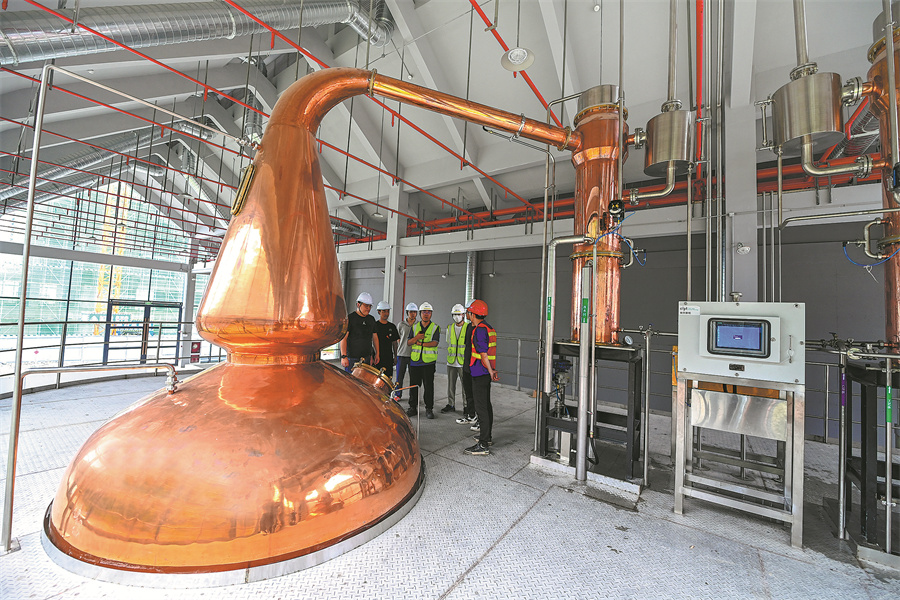Popularity of nation's maturing whisky industry uncorked
Distillers mushroom across the country, producing spirit with a local twist


Improving standards
At the Grand Hyatt Beijing, sommelier Zhang Haomeng oversees a whisky list that includes two domestic brands — Daiking from Fujian province and Kavalan from Taiwan.
Although the menu offers about a dozen options from countries like Scotland, the United States, and Japan, Zhang noted that so far, guests rarely request to try Chinese whiskies.
"There's still a gap in brand recognition and acceptance compared with the major international labels," he said. "Guests usually prefer famous names like Macallan or Yamazaki."
While he has been watching the boom in Chinese whisky production with interest, he remains cautious about the quality of products that have not yet reached the market.
Zhang sees advantages for domestic whiskies, particularly in lower logistics and bottling costs compared with imports. However, he also acknowledges that Chinese brands still trail international competitors in terms of mature production systems and brand influence.
To build a stronger presence, Zhang believes domestic producers must prioritize product quality and consistency.
He also emphasized the importance of education: sommeliers and hospitality professionals should learn more about Chinese whiskies and share their stories with guests to foster greater consumer confidence.
As China's whisky industry matures, government regulators are stepping in to ensure quality keeps pace with growth. New national standards, set to take effect in 2026, could redefine what it means to be a "Chinese whisky" — for both producers and consumers.
The country first introduced national whisky standards in 1989, followed by updates in 2000 and 2008. The current version, in place since 2009, has struggled to keep pace with the rapid expansion of China's whisky industry.
The forthcoming new standards are intended to support the sector's ongoing transformation.
Key changes include new rules to expand the classification system for whisky, and defining categories such as malt whisky, grain whisky, blended whisky, and flavored whisky. They also introduce clearer definitions for concepts like "new make spirit", the clear distillate that comes off the still during the initial stages of whisky production, "age statement", and strengthen the focus on quality indicators and testing methods.
Production and labeling requirements have also been tightened. Single malt whisky must be aged in oak barrels for at least three years, and grain whisky must undergo barrel maturation as well. Producers are also encouraged to indicate the age of the spirit to help consumers make better-informed choices.
The new standards stress that whisky must be made from grain and produced through saccharification, fermentation, distillation, and maturation, with blending being optional. Single malt whisky must age for at least three years without the use of exogenous enzymes, neutral alcohols, or non-caramel coloring agents.
Yuan Yue, secretary-general of the Whisky Committee at the China Alcoholic Drinks Association, said that whisky quality hinges on every step of production, from raw material selection to distillation, aging, and blending.
If any link is missing, she warned, the spirit would lose its defining character.
Yuan described the 2025 standards not just as a technical update but as a sign of the government's growing attention to the industry's development. She believes the new rules will help domestic whisky brands grow stronger, ensure fairer competition with imports, and offer greater protection to consumers.




































